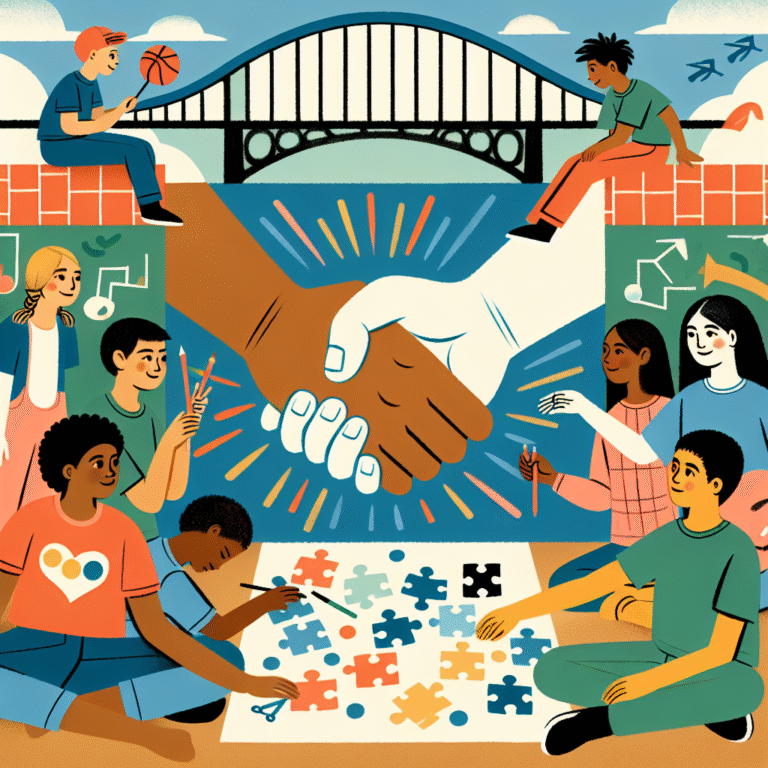
Introduction
In a world saturated with words, from text messages to social media posts, it can be easy to overlook the importance of nonverbal communication. Yet, research suggests that up to 93% of our communication is nonverbal—comprised of body language, gestures, facial expressions, tone of voice, and even the physical space between individuals. Understanding the concept of Beyond Words: The Power of Nonverbal Communication in Everyday Life can enhance our interactions, improve our relationships, and give us a distinct edge in both personal and professional spheres.
Imagine a job interview where the candidate exudes confidence—not just through their words but also by maintaining eye contact, offering a firm handshake, and displaying open body language. Now consider a conversation where one person nods affirmatively while their arms are crossed tightly; the contrast between verbal affirmations and nonverbal cues can lead to mixed signals and misunderstandings. This article will explore the depth of nonverbal communication and how mastering it can transform our everyday interactions.
The Fundamentals of Nonverbal Communication
Understanding Nonverbal Communication
Nonverbal communication includes a variety of forms, each playing a crucial role in how we express ourselves and interpret the expressions of others. Here are some key components:
-
Body Language: The way we sit, stand, or lean can indicate our feelings and attitudes. Open body language often conveys approachability, while crossed arms may suggest defensiveness.
-
Facial Expressions: Our faces can convey a wide range of emotions—including happiness, sadness, anger, and confusion—often more effectively than words can.
-
Gestures: Simple hand movements can reinforce a message or indicate enthusiasm. However, gestures can also vary widely in meaning across different cultures.
-
Eye Contact: This plays a pivotal role in showing interest and confidence. Too little eye contact may signal disengagement, while too much can be intimidating.
- Proxemics: The physical distance we maintain during interactions varies based on our relationship with the other person and the cultural context. While close proximity may be comfortable among friends, it could be perceived as intrusive by strangers.
Case Study: The Role of Nonverbal Communication in Healthcare
A compelling case study that illustrates Beyond Words: The Power of Nonverbal Communication in Everyday Life can be observed in the healthcare sector. Research shows that doctors who engage in effective nonverbal communication—like maintaining eye contact, nodding, and using open body language—are more likely to be perceived as caring and attentive by their patients. A study published in the Journal of General Internal Medicine found that when physicians demonstrated empathy through nonverbal cues, patient satisfaction scores significantly improved.
This case highlights the necessity for healthcare professionals to master nonverbal communication to foster strong doctor-patient relationships, thereby improving care quality and patient outcomes.
Table: Elements of Nonverbal Communication
| Element | Description | Impact on Communication |
|---|---|---|
| Body Language | Posture, gestures, and movement | Conveys confidence or insecurity |
| Facial Expressions | Emotions shown through facial movements | Heightens or contradicts verbal messages |
| Gestures | Hand movements that emphasize or illustrate what is said | Can reinforce or confuse the intended message |
| Eye Contact | Looking someone in the eye or avoiding it | Indicates engagement or disinterest |
| Proxemics | Use of personal space | Communicates intimacy or discomfort |
The Impact of Nonverbal Communication in Different Contexts
Personal Relationships
Nonverbal communication plays an integral role in our personal relationships. Whether with family members or close friends, the ability to read someone’s nonverbal cues can foster deeper understanding and empathy. When a loved one is visibly upset, the choice to comfort them with a gentle touch or a warm embrace speaks volumes, often rendering words unnecessary.
Case Study: The Power of Nonverbal Communication in Romantic Relationships
Consider romantic relationships where couples often communicate their love or frustration nonverbally. A fascinating study in the Journal of Marriage and Family revealed that couples who engage in positive nonverbal behavior—like holding hands, hugging, or maintaining eye contact—reported higher satisfaction in their relationships. This highlights how Beyond Words: The Power of Nonverbal Communication in Everyday Life can significantly influence relationship dynamics.
Professional Settings
In the professional realm, nonverbal communication affects everything from initial impressions to ongoing workplace relationships. For example, during presentations, a speaker’s confidence can be bolstered by their posture, eye contact, and gestures, making their message more impactful. Furthermore, listening actively—nodding and maintaining eye contact—can enhance teamwork and foster a more collaborative environment.
The Cultural Dimensions of Nonverbal Communication
Understanding Cultural Differences
Nonverbal communication is not uniform across cultures; what is acceptable in one culture may be inappropriate in another. For instance, in many Western cultures, direct eye contact is encouraged as a sign of honesty and engagement. In contrast, some Asian cultures might perceive prolonged eye contact as disrespectful. Understanding these differences is essential for effective communication in our increasingly globalized world.
Tips for Navigating Cultural Nuances
-
Do Your Research: Before engaging with individuals from different cultural backgrounds, educate yourself on their nonverbal communication norms.
-
Observe: Take cues from the nonverbal behavior of others. If they seem uncomfortable with certain gestures or proximity, adapt your behavior accordingly.
- Ask Questions: When in doubt, clarify meanings or ask about cultural practices to avoid misunderstandings.
The Science Behind Nonverbal Communication
Analyzing Research Findings
Multiple studies have quantified the significance of nonverbal communication. For instance, research conducted at UCLA found that nonverbal cues can account for 55% of communication effectiveness. Understanding this data is vital for professionals aiming to enhance their communication skills.
Case Study: Nonverbal Communication in Leadership
Effective leaders often excel at using nonverbal communication to inspire and engage their teams. Consider the case of a renowned CEO who, during a company meeting, makes eye contact with employees while enthusiastically gesturing to emphasize key points. This nonverbal engagement creates a more compelling message, fostering team motivation and cohesion.
Actionable Strategies to Improve Nonverbal Communication Skills
Become More Self-Aware
Self-awareness is a vital first step in improving your nonverbal communication. Regularly check in with your body language, facial expressions, and gestures, especially during critical conversations.
Practice Active Listening
Active listening extends beyond hearing words; it encompasses observing nonverbal cues as well. By fully engaging in conversations, you can enhance your understanding and respond more effectively.
Mirror and Match
To build rapport, consciously mirror the nonverbal cues of others. This could include adopting similar body language or gestures. However, be cautious to do this subtly, as it should not come across as insincere or mocking.
Utilize Feedback
Ask trusted friends or coworkers for feedback on your nonverbal communication skills. Honest insights can help you identify areas for improvement.
Conclusion
As we navigate through various aspects of life, understanding the intricacies of nonverbal communication—Beyond Words: The Power of Nonverbal Communication in Everyday Life—is essential for fostering genuine connections. From personal relationships to professional settings, the right nonverbal cues can pave the way for understanding, empathy, and increased effectiveness.
Take the initiative to cultivate your nonverbal communication skills. Start by observing your interactions and those around you. Reflect on the nonverbal cues you both send and receive, adapting and learning along the way. The world of communication extends well beyond words—embracing the power of nonverbal communication may just unlock the potential for richer, more fulfilling interactions in your everyday life.
FAQs
1. What is nonverbal communication?
Nonverbal communication encompasses all forms of communication that do not involve words, including body language, facial expressions, tone of voice, and gestures.
2. Why is nonverbal communication important?
Nonverbal communication is crucial because it often conveys emotions and attitudes more effectively than words, helping us understand people on a deeper level.
3. How can I improve my nonverbal communication skills?
To improve nonverbal communication, practice self-awareness, engage in active listening, observe others, and seek feedback from trustworthy sources.
4. Are nonverbal cues the same in all cultures?
No, nonverbal cues can vary significantly across cultures, with different gestures or expressions having unique meanings. It’s essential to be aware of these differences to communicate effectively.
5. How does nonverbal communication affect relationships?
Nonverbal communication significantly impacts relationships by enhancing emotional expressions and enabling clearer understanding. Engaging nonverbally can foster closeness, trust, and rapport.















